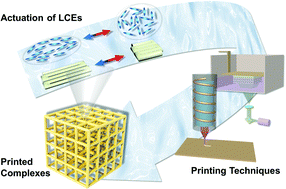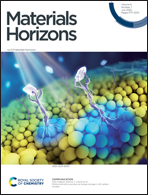Advances in 4D printing of liquid crystalline elastomers: materials, techniques, and applications
Abstract
Liquid crystalline elastomers (LCEs) are polymer networks exhibiting anisotropic liquid crystallinity while maintaining elastomeric properties. Owing to diverse polymeric forms and self-alignment molecular behaviors, LCEs have fascinated state-of-the-art efforts in various disciplines other than the traditional low-molar-mass display market. By patterning order to structures, LCEs demonstrate reversible high-speed and large-scale actuations in response to external stimuli, allowing for close integration with 4D printing and architectures of digital devices, which is scarcely observed in homogeneous soft polymer networks. In this review, we collect recent advances in 4D printing of LCEs, with emphases on synthesis and processing methods that enable microscopic changes in the molecular orientation and hence macroscopic changes in the properties of end-use objects. Promising potentials of printed complexes include fields of soft robotics, optics, and biomedical devices. Within this scope, we elucidate the relationships among external stimuli, tailorable morphologies in mesophases of liquid crystals, and programmable topological configurations of printed parts. Lastly, perspectives and potential challenges facing 4D printing of LCEs are discussed.

- This article is part of the themed collections: Celebrating International Women’s Day: Women in Materials Science, Materials Horizons 2022 Most Popular Articles and 2023 Materials Horizons Lunar New Year collection


 Please wait while we load your content...
Please wait while we load your content...